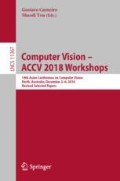Abstract
We examined the difference in ability to discriminate glaucoma among artificial intelligence models trained with partial area surrounding the optic disc (Cropped) and whole area of a ultra-wide angle ocular fundus camera (Full). 1677 normal fundus images and 950 glaucomatous fundus images of the Optos 200Tx (Optos PLC, Dunfermline, United Kingdom) images in the Tsukazaki Hospital ophthalmology database were included in the study. A k-fold method (k = 5) and a convolutional neural network (VGG16) were used. For the full data set, the area under the curve (AUC) was 0.987 (95% CI 0.983–0.991), sensitivity was 0.957 (95% CI 0.942–0.969), and specificity was 0.947 (95% CI 0.935–0.957). For the cropped data set, AUC was 0.937 (95% CI 0.927–0.949), sensitivity was 0.868 (95% CI 0.845–0.889), and specificity was 0.894 (95% CI 0.878–0.908). The values of AUC, sensitivity, and specificity for the cropped data set were lower than those for the full data set. Our results show that the whole ultra-wide angle fundus is more appropriate as the amount of information given to a neural network for the discrimination of glaucoma than only the range limited to the periphery of the optic disc.
Access this chapter
Tax calculation will be finalised at checkout
Purchases are for personal use only
References
1990-The Beginning. https://www.optos.com/en/about/
Products. https://www.optos.com/en/products/
Imaging ultra-wide without compromise ZEISS CLARUS 500. https://www.zeiss.com/meditec/int/products/ophthalmology-optometry/retina/diagnostics/fundus-imaging/clarus-500.html
Ohsugi, H., Tabuchi, H., Enno, H., Ishitobi, N.: Accuracy of deep learning, a machine-learning technology, using ultra–wide-field fundus ophthalmoscopy for detecting rhegmatogenous retinal detachment. Sci. Rep. 25, 9425 (2017)
Meshi, A., et al.: Comparison of retinal pathology visualization in multispectral scanning laser imaging. Retina (2018). [Epub ahead of print]
Matsuba, S., et al.: Accuracy of ultra–wide-field fundus ophthalmoscopy-assisted deep learning, a machine-learning technology, for detecting age related macular degeneration. Int. Ophthal. (2018). https://doi.org/10.1007/s10792-018-0940-0
Masumoto, H., Tabuchi, H., Nakakura, S., Ishitobi, N., Miki, M., Enno, H.: Deep-learning classifier with an ultrawide-field scanning laser ophthalmoscope detects glaucoma visual field severity. J. Glaucoma 27, 647–652 (2018)
Nagasawa, T., et al.: Accuracy of deep learning, a machine-learning technology, using ultra–widefield fundus ophthalmoscopy for detecting idiopathic macular holes. Peer J. 6, e5696 (2018). https://doi.org/10.7717/peerj.5696.eCollection2018
Author information
Authors and Affiliations
Corresponding author
Editor information
Editors and Affiliations
Rights and permissions
Copyright information
© 2019 Springer Nature Switzerland AG
About this paper
Cite this paper
Tabuchi, H., Masumoto, H., Nakakura, S., Noguchi, A., Tanabe, H. (2019). Discrimination Ability of Glaucoma via DCNNs Models from Ultra-Wide Angle Fundus Images Comparing Either Full or Confined to the Optic Disc. In: Carneiro, G., You, S. (eds) Computer Vision – ACCV 2018 Workshops. ACCV 2018. Lecture Notes in Computer Science(), vol 11367. Springer, Cham. https://doi.org/10.1007/978-3-030-21074-8_18
Download citation
DOI: https://doi.org/10.1007/978-3-030-21074-8_18
Published:
Publisher Name: Springer, Cham
Print ISBN: 978-3-030-21073-1
Online ISBN: 978-3-030-21074-8
eBook Packages: Computer ScienceComputer Science (R0)

